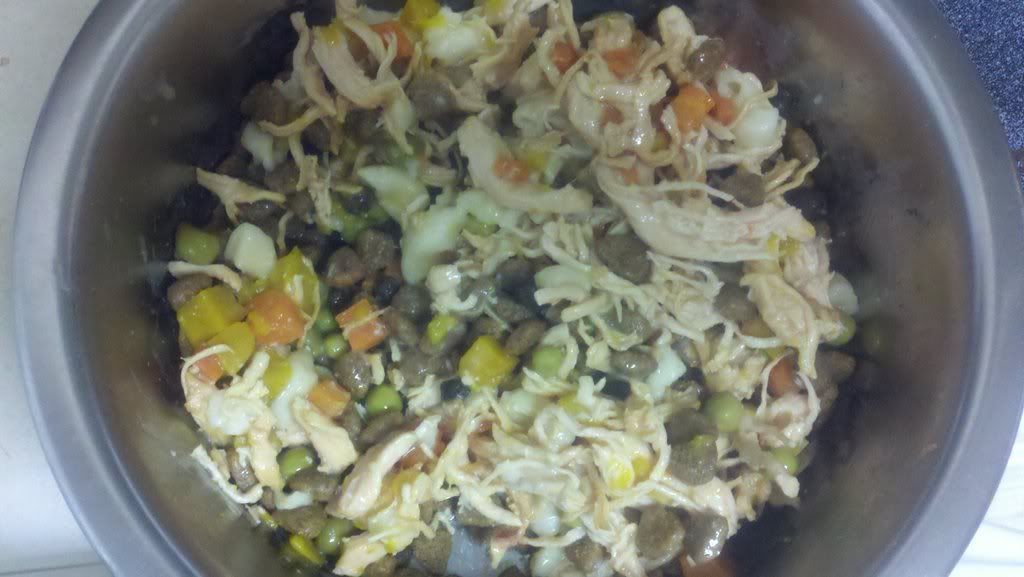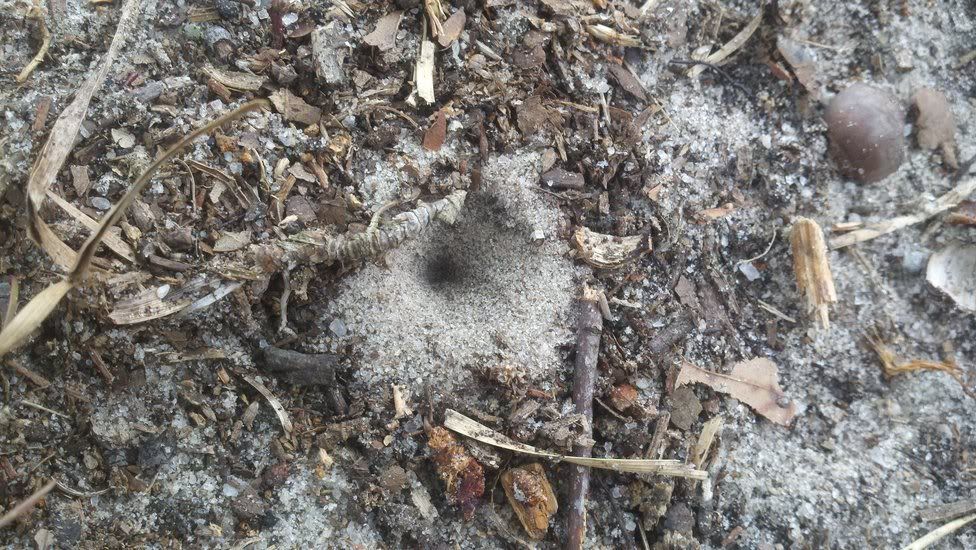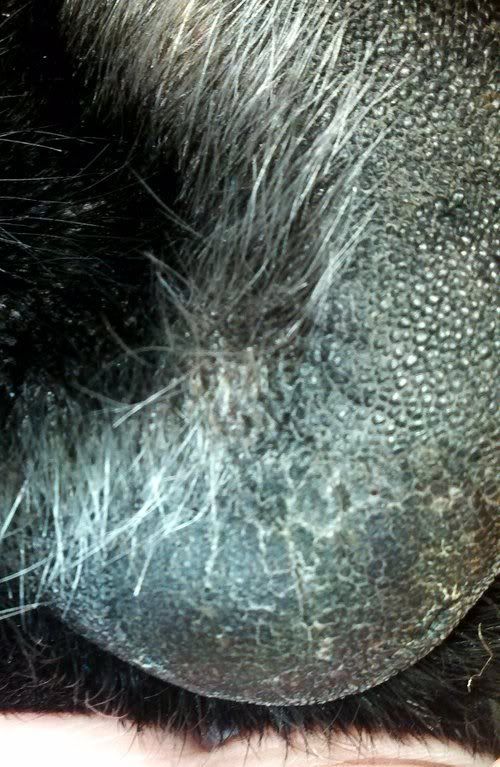I know that dog food has been a hot topic lately, and I thought that I would weigh in. Here's what Ebon's dinner looked like today, including a special canned food treat:
 |
| One cup and a bit of Blue Buffalo Lamb & Brown Rice and one 10 oz can Simply Nourish Chicken & Pasta Stew |
I feed my dog the best food that I can on a college student's budget. His diet on most days consists of about three and seven-eighths cups of kibble split into two meals. That comes out to about one thirty pound bag of food every month. It's a lot of food, but I love my dog and I want to do the best for him that I can. I currently feed Blue Buffalo Life Protection, whichever formula happens to be on sale when we visit the store. He's almost out of Lamb & Brown Rice, after which I have a bag of Fish & Sweet Potato and another of Chicken & Brown Rice. He's had basically every food from the Life Protection line except for those made for small dogs or puppies. I prefer the non-large breed kibbles because the smaller size prevents him from eating too fast. I chose Blue because it is on the higher end of quality in the dog food world, and in its price range it is one of the best values. I'm seriously considering switching to Simply Nourish dry food because it is comparable to Blue quality-wise, but is a few dollars cheaper for the same amount of food.
 |
| Someone likes the smell |
I don't give Ebon canned food often because of the cost, but he gets it as a treat about once every month or two. This was the first time that I've given him Simply Nourish and I was very happy with it. I switched him completely over to Blue Buffalo some time ago, and his canned treat used to come from their line of food, but most of their canned food looks, frankly, like most dog food: a bit like brown, processed who knows what. I know what the label says and the food is pretty good, but I can't keep my brain from saying "ew." Though it smells better than the cheap stuff, it still had that unpleasant canned food smell to it. Simply Nourish, on the other hand, is bright and colorful. You can see
every ingredient that is listed on the label except for the added vitamins and minerals. It looks like something I would eat. It also actually smelled not unlike canned chicken soup...but with pumpkin in it.
So, what is my opinion on what people should feed their pets? I do not think that you necessarily have to feed grain-free food or top-quality food. I don't think that you necessarily have to feed raw or home-cooked or canned, even though many vets promote that and I would probably choose to feed a raw diet if I was able to afford it. Less processed foods are the healthiest, which is true for people and for animals too. I do suggest buying the best that you are able. I don't think variety is very important. If you don't spoil your dog by giving them tidbits of everything in the house, they'll eat any food you give them. It's their nature. Our old dog Charlie got table scraps on about a weekly basis and was pretty picky, preferring people food to dog food (which got to be a serious problem when he became ill). Ebon didn't get table scraps until he was two because I didn't want him to be spoiled, and he'll eat anything you give him. Variety can also actually be quite bad if your dog has certain allergies.
I will note that there are many benefits to feeding a dog higher-quality food. I have noticed many changes in Ebon since he was switched off of Iams: less poop, firmer poop, less stinky poop, a shinier coat, less shedding, more energy, cleaner teeth, and he just generally smells better. I am not a veterinarian, but here is what I do think everyone should consider if they care about their pet:
- Know what is in your food! If you don't make it yourself, read that label!
- Make sure the diet is balanced. Foods such as "95% Meat" canned are not balanced and should not be fed exclusively, but in combination with other foods. Again, read the label!
- Look past the bright, colorful packaging. Some of foods in the prettiest packaging are actually full of unsavory ingredients.
- Beware of labeling such as "premium" as there is no regulation on such terms and may hide a lower quality product.
- Only buy food that lists the source of its ingredients. If the label says "meat"or "animal protein" or anything like that, don't buy it. Would you want to eat mystery meat?
- Look for food that lists some form of meat as the first ingredient. Though dogs are omnivores, they do have a noticeable preference for meat and as such unless your dog has a specific issue with animal protein, animal protein is good.
- Avoid things like artificial colors. They're to make the food look pretty to you and are really a pointless adition. Your pet won't care what their food looks like.
- Talk to your vet. They will generally be able to help, especially if your pet is having some sort of medical issue.
In conclusion, be smart and know what you're feeding your pet. There are a lot of dog food review websites out there, and they can help you make an informed decision (my personal favorite being the
Dog Food Advisor) but be cautious and check their analysis. If you do decide to change, always transition foods gradually to avoid stomach upsets. Feed to a good weight, and beware that better quality food generally has more calories and thus you'll probably need to feed less.













































